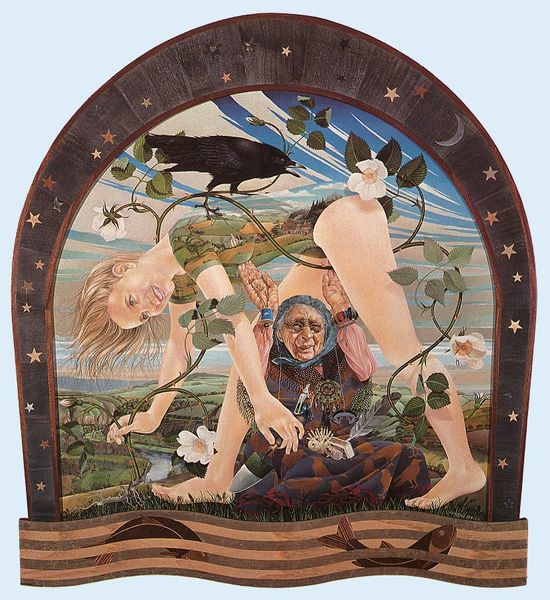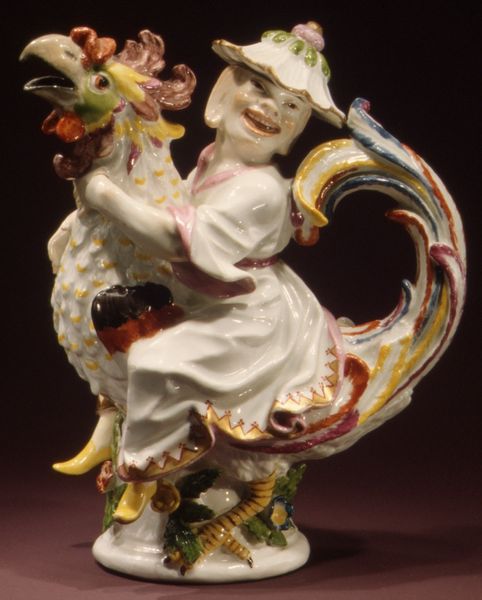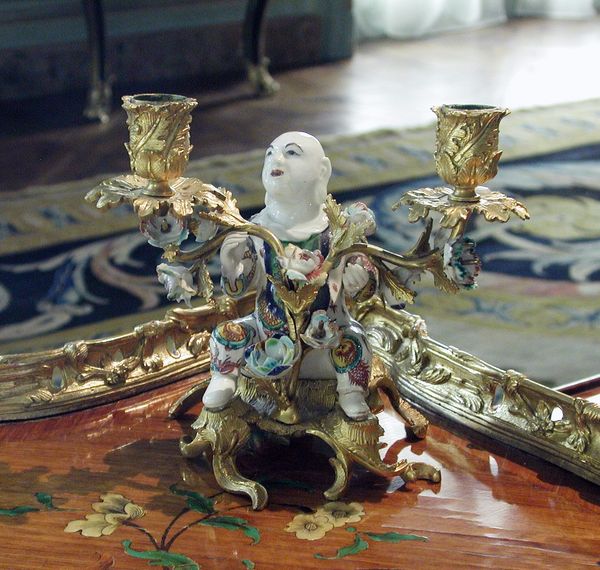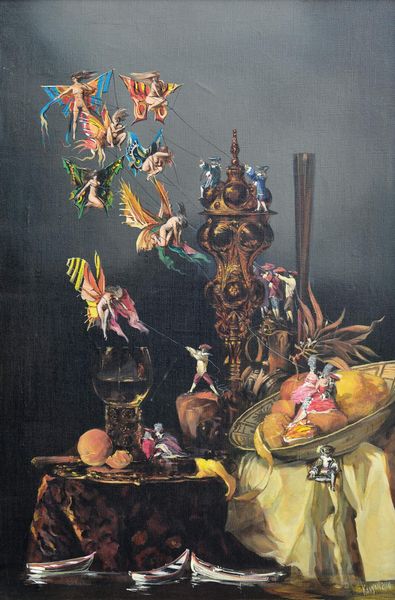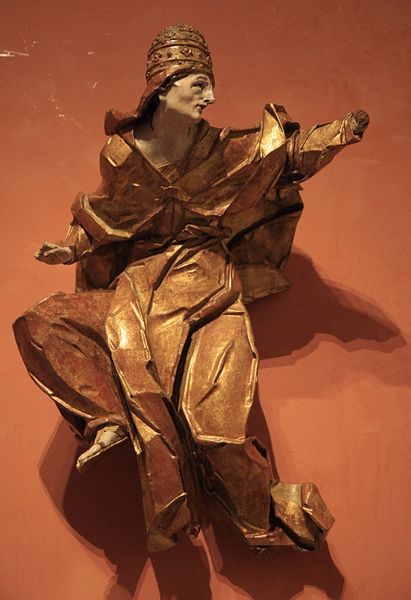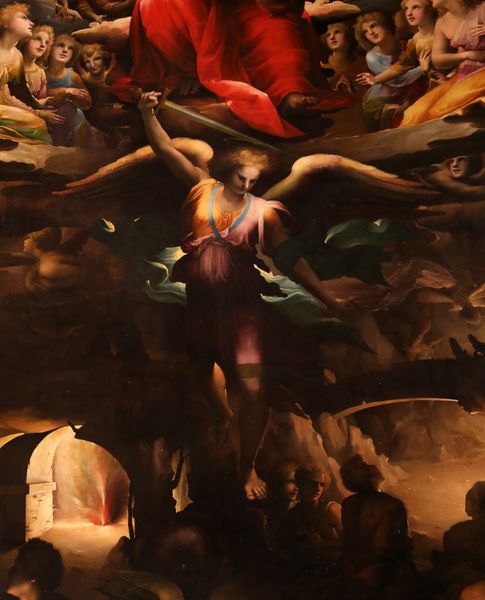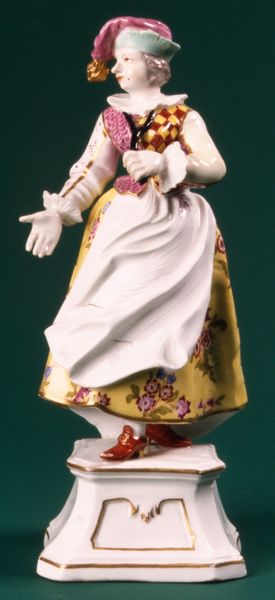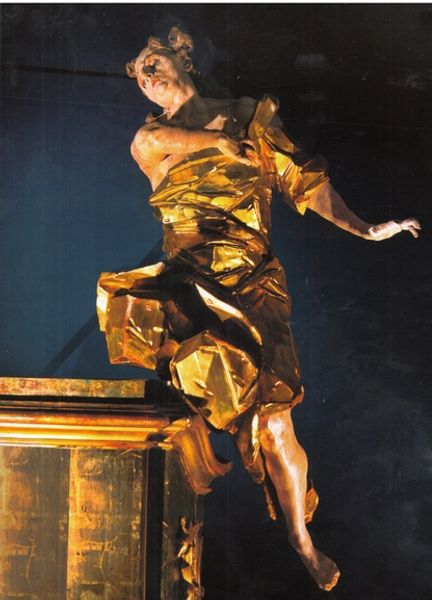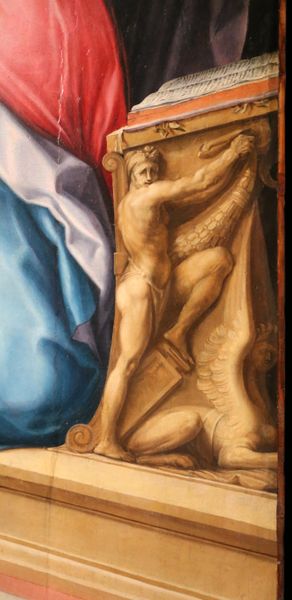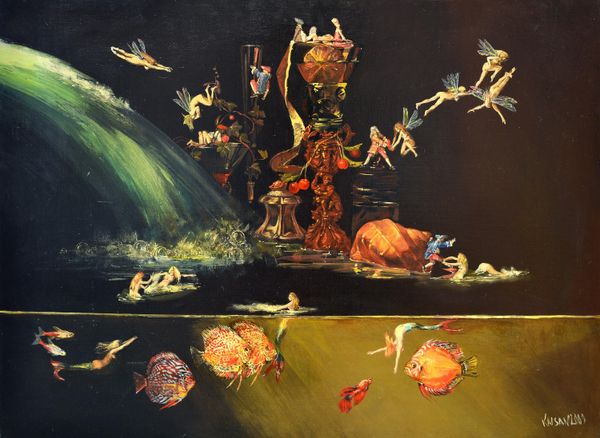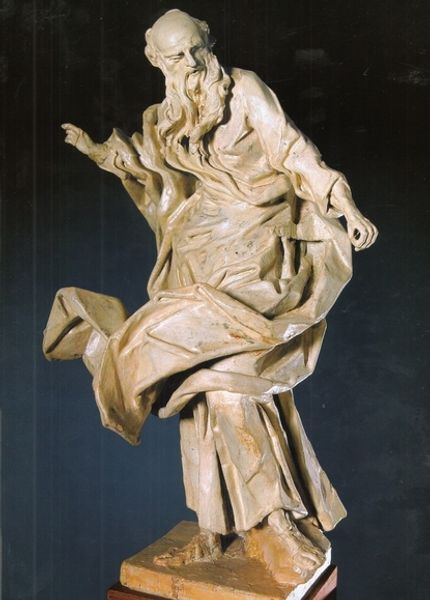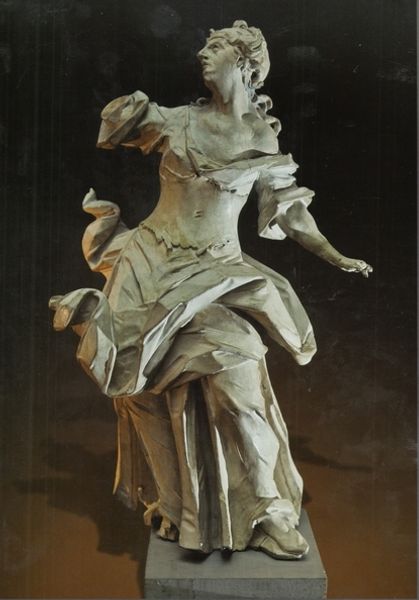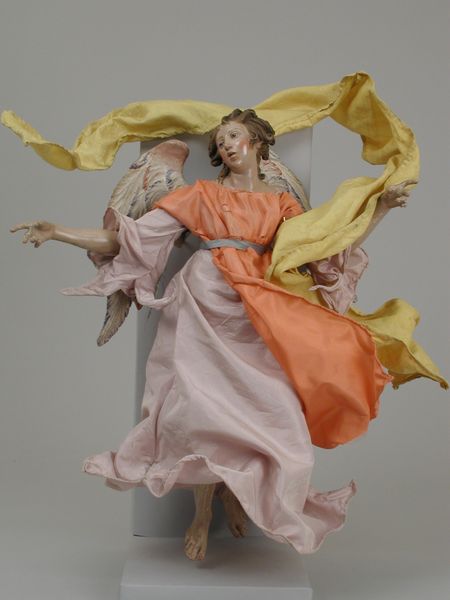
painting, oil-paint
#
portrait
#
gouache
#
contemporary
#
painting
#
oil-paint
#
figuration
#
academic-art
#
realism
Copyright: Modern Artists: Artvee
Editor: Here we have Nelson Shanks' oil painting, "What Have We Done to Angels," created between 1993 and 1996. It's incredibly detailed; the angel figure looks almost burdened. How do you interpret this work? Curator: It strikes me as a poignant commentary on the intersection of innocence and cultural expectations, especially within artistic representation. Consider the title, "What Have We Done to Angels?" Shanks positions us to question our own actions, socially and historically. Editor: I see that, especially with the angel posed against the ornate background. Curator: Precisely. The backdrop, suggestive of classical motifs and religious art, frames the angel not as a celestial being, but almost as a discarded prop. Doesn't that staging bring to mind debates about representation and cultural appropriation? We’re implicitly asked to consider who is benefiting from these images, and who is being othered. Editor: So it's a critique of how we've, say, commodified or exoticized these symbols? Curator: Absolutely. Shanks utilizes a very traditional technique to raise contemporary questions about exploitation and the weight of visual history. Where do we place figures of supposed purity when we want to use them? Does the classical art-historical rendering complicate its modern political message? Editor: It’s like the beauty and detail distract you from the difficult questions he’s raising about how we perceive the art itself. Curator: Indeed. The work encourages us to reflect on the relationship between beauty, power, and ethics, within the narratives shaped by art history. Editor: I hadn't considered those elements, thank you. This reframes everything I thought I knew. Curator: And it encourages us to think more critically about visual culture.
Comments
No comments
Be the first to comment and join the conversation on the ultimate creative platform.
